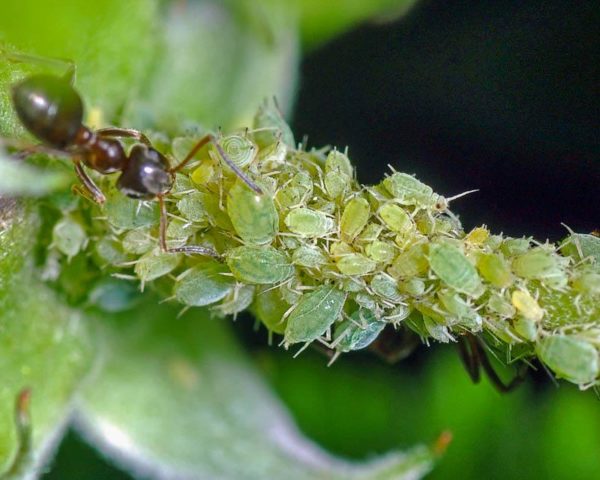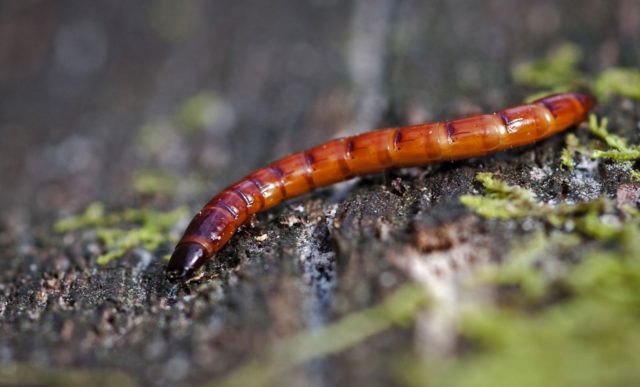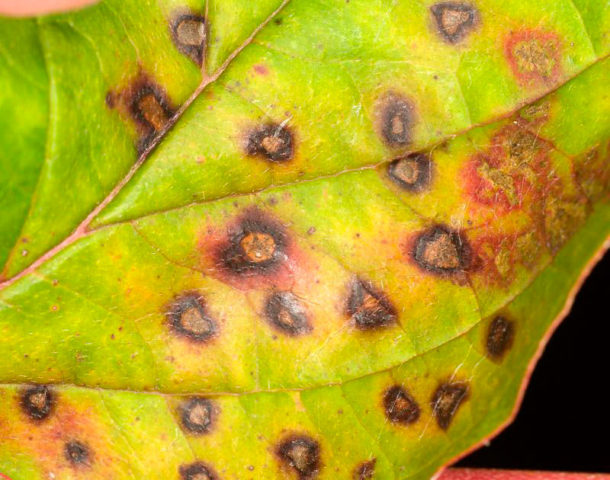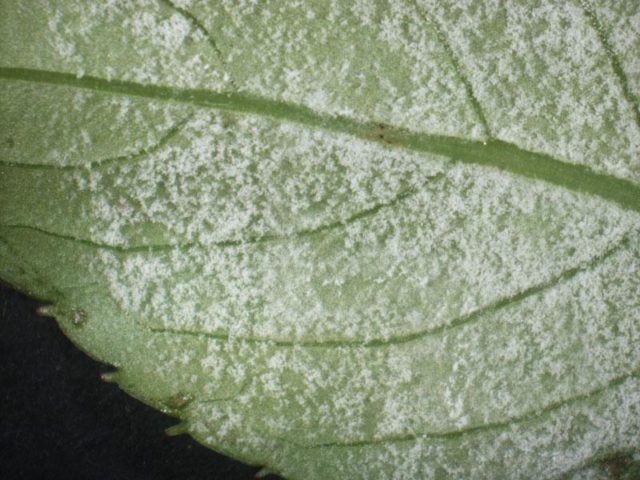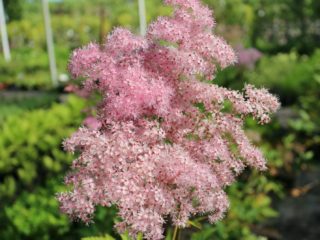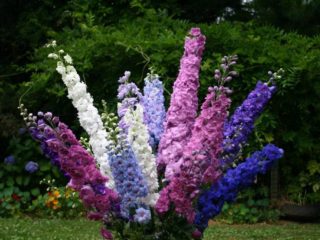Content
Red meadowsweet Venusta Magnifica is an exquisite variety of meadowsweet or meadowsweet (Filipendula ulmaria). Venusta Magnifica is an excellent example of a decorative crop for decorating the local area from the popular Rose family (Rosaceae). Not only the bright inflorescences have an original appearance, but also the carved foliage and ripening fruits of exotic color.
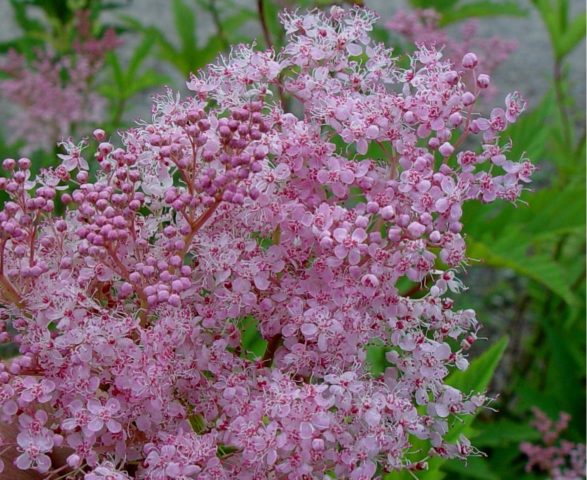
Under natural conditions, meadowsweet Venusta Magnifica grows in North America, where locals call it the “queen of the prairies”
History of selection
The herbaceous perennial red meadowsweet Venusta Magnifica (Filipendula rubra Venusta Magnifica) has a rather impressive appearance. The size of the bush reaches 2 m. It is known that the red meadowsweet Venusta Magnifica has been cultivated for decorative purposes since 1765. The first mentions of the culture date back to the 12th century. The plant prefers well-lit and moist areas and can withstand frosts down to -35 ⁰C.
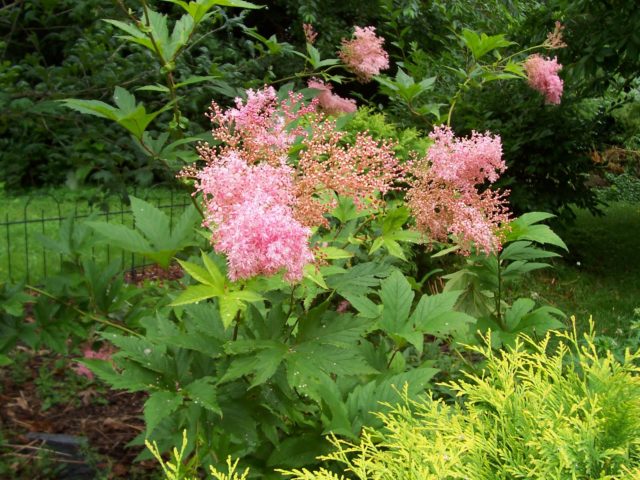
The majestic meadowsweet plant Venusta Magnifica has been introduced to North America.
Description of the meadowsweet variety Venusta Magnifica and characteristics
Red meadowsweet (meadowsweet) Venusta Magnifica is a unique herbaceous perennial crop capable of forming large groups. Under favorable conditions, the plant grows quickly and extensively and is aggressive towards other (weaker crops) on the site.
The culture, whose homeland is considered to be North America, actively develops in partial shade and in the sun, requires constant moisture, and blooms magnificently with a lush and fragrant cloud of weightless buds.
The beautiful ornamental plant Venusta Magnifica is distinguished by the following varietal characteristics:
- the root system is fibrous, creeping, with root nodules hanging from thread-like roots;
- bush height 1.5-2 m;
- stems simple or branched, erect, ribbed, smooth, densely leafy, hard;
- the main leaves are intermittently pinnately divided, large, with a five-lobed or seven-lobed terminal lobe;
- intermediate leaves are small, sharply toothed;
- the aroma of the leaves when rubbed is pungent;
- the color of the leaves on the upper side is dark green, on the lower side - white felt;
- peduncles are long, strong, erect;
- paniculate inflorescences, dense, with small flowers;
- inflorescence length up to 20 cm;
- flowers are bisexual, numerous, five-petaled, with rounded petals in the form of long marigolds, with long stamens (1.5-2 times longer than the petals);
- the color of the inflorescences is pink, crimson, carmine red, red;
- the aroma during flowering is pleasant and subtle;
- flowering period from July to August;
- the fruit is a multi-leaflet of 10-15 spiral-shaped, glabrous, single-seeded leaflets;
- The color of the fruit is bright crimson.
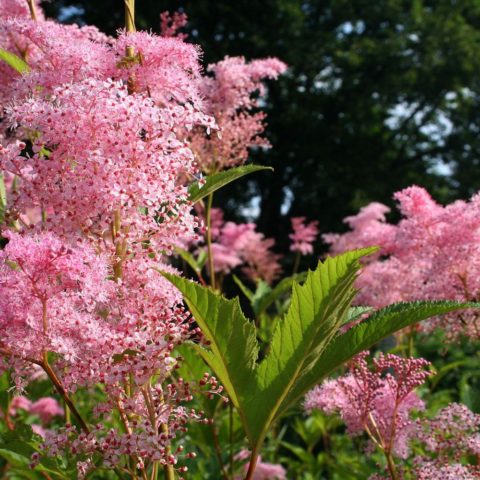
With strong shading, the “queen of the prairies” red meadowsweet Venusta Magnifica may stop blooming
Advantages and disadvantages
Ornamental red meadowsweet Venusta Magnifica is a beautiful ornamental plant, ideal for decorating the local area. But this is not the only advantage of the plant.
Pros:
- ease of care;
- frost resistance;
- endurance;
- stress resistance;
- tolerates scorching sun well (blooms more intensely in the sun than in light shade);
- beautiful appearance of foliage, inflorescences, ripe fruits, and the plant as a whole;
- decorative appeal throughout the growing season.
Minuses:
- requires abundant watering and constant soil moisture;
- does not bloom when placed in heavily shaded areas;
- shows aggressiveness towards other cultures.

The average annual growth of the root system of the meadowsweet (meadowsweet) Red Venusta Magnifica is about 15 cm, so the plant is characterized by an extensive root system
Reproduction methods
Red meadowsweet (meadowsweet) variety Venusta Magnifica propagates in two main ways:
- seed (seedling, direct sowing);
- vegetative (dividing the bush, root tubers, cuttings).
The seed propagation method is rarely used. Meadowsweet seeds are sown in open ground before winter for natural stratification to a depth of 1.5-2 cm. They are thinned out in the spring.
For seedlings, seeds are sown indoors in March.They are scattered on the surface of the earth in seedling boxes, moistened well and germinated under film. After the emergence of seedlings, the shelter is removed. At the end of June, the seedlings are transplanted into open ground.
The division of the bush and root tubers is done in late autumn (late September or October) or early spring (March and early April). A healthy mother bush (at least 5 years old) is dug out of the ground after the soil has been thoroughly moistened and the root system is cut into pieces; the length of the roots of individual plots is up to 10 cm. Prerequisite: the presence of 2-3 viable buds in each plot. The cutting areas on the plots are treated with charcoal and immediately planted in the ground.
Cuttings are used green or lignified. The first is carried out in the spring. Lignified shoots are cut off in late autumn. Cuttings are rooted in greenhouse conditions and then transferred to open ground.

If it is not possible to immediately replant the meadowsweet, the plots are stored in the refrigerator (wet sand, damp cloth, wet sawdust) to prevent drying and death of the root system
Planting and caring for red meadowsweet Venusta
The ideal period for planting rhizomes is autumn or spring.
The most preferable for meadowsweet are fertile, neutral, slightly acidic, loamy soils, well-lit places with close groundwater.
Agricultural technology for planting root plots:
- the soil is loosened and well moistened;
- form planting holes 5-10 cm deep;
- the roots are placed in the holes parallel to the surface of the earth with the pointed buds pointing upward;
- the plots are buried at the level of the root collar;
- the distance between individual plots is more than 0.5 m.
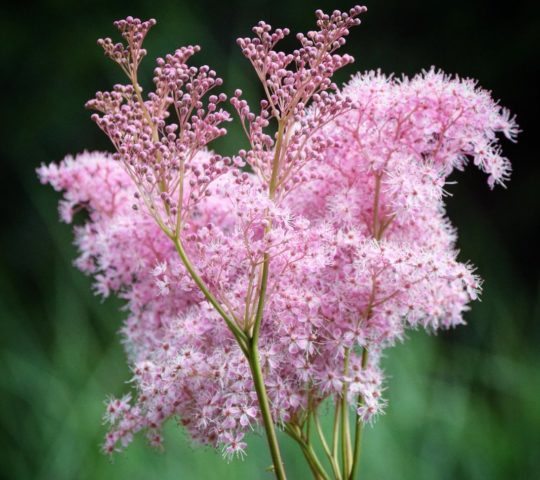
Meadowsweet is not recommended to be planted in acidic soil.
Caring for meadowsweet (meadowsweet)
Meadowsweet, or red meadowsweet Venusta Magnifica, does not require careful care. For the plant, abundant watering during the summer is sufficient.
Mandatory rules for crop care:
- irrigation at least 2 times a week;
- loosening the soil;
- weed removal;
- feeding 1-2 times per season with organic and mineral fertilizers.

Frost-resistant crop does not need winter shelter
Pests and diseases
Although red meadowsweet has strong immunity, in rare cases meadowsweet is exposed to pests:
- Aphids cause damage to foliage as they feed on plant cell sap. The color falls, the meadowsweet bush loses its attractive appearance.
Meadowsweet bushes are treated against aphids with a strong soap solution or insecticides
- The wireworm, or click beetle larva, damages the root system of plants.
Liming the soil allows you to get rid of wireworms in areas where meadowsweet is planted.
Among the pathogens that affect meadowsweet are:
- RustA. Its signs on meadowsweet (meadowsweet) appear on the basal foliage as brown, brown spots.
Spraying with a solution of lime or copper sulfate, modern fungicides allows you to get rid of fungal diseases on bushes
- Powdery growthA. It may appear in mid-summer as a bluish or white coating on the foliage at the base of the stem and gradually move to the apical leaves and inflorescences. Affected meadowsweet (meadowsweet) bushes should be removed and burned, and the planting site should be treated with disinfectants.
To prevent powdery mildew, spray meadowsweet (meadowsweet) bushes with a solution of soda ash or colloidal sulfur.
Application in landscape design
Meadowsweet (meadowsweet) red Venusta Magnifica during flowering can create a magnificent “pink haze” effect. Openwork panicles with densely arranged flowers of pink, red, carmine, raspberry shades will effectively decorate any corner of the local area.
The Venusta Magnifica plant looks beautiful:
- in single plantings in the form of a tapeworm;
- in group, thickened plantings;
- on the coastline of reservoirs;
- mixborders in the background;
- in the central part of the composition of flower beds and rockeries;
- as a hedge, decorative walls, fences.
Red meadowsweet Venusta Magnifica harmonizes with hostas, hydrangea, lily, ferns, irises, tobacco, peonies, carnations, and clematis.
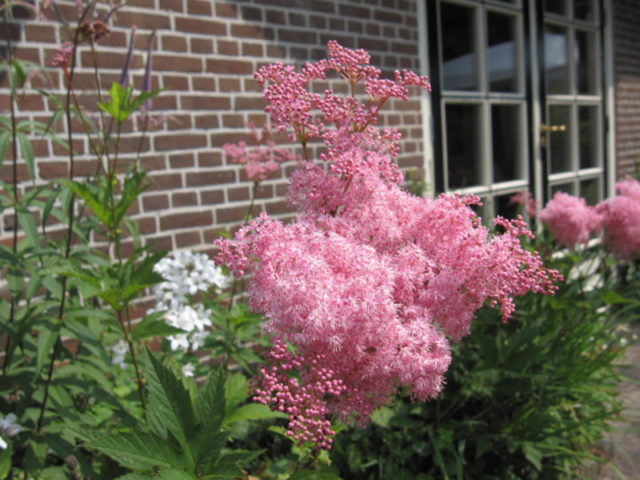
Thickened plantings of red meadowsweet Venusta Magnifica can be used to decorate the entrance to the house or plant plants along the perimeter of the territory
Conclusion
Red meadowsweet Venusta Magnifica is a spectacular, elegant, ornamental plant that is endowed with rich medicinal properties. The plant has a beneficial effect on the cardiovascular, reproductive, digestive, and nervous systems, and is effective against colds.
